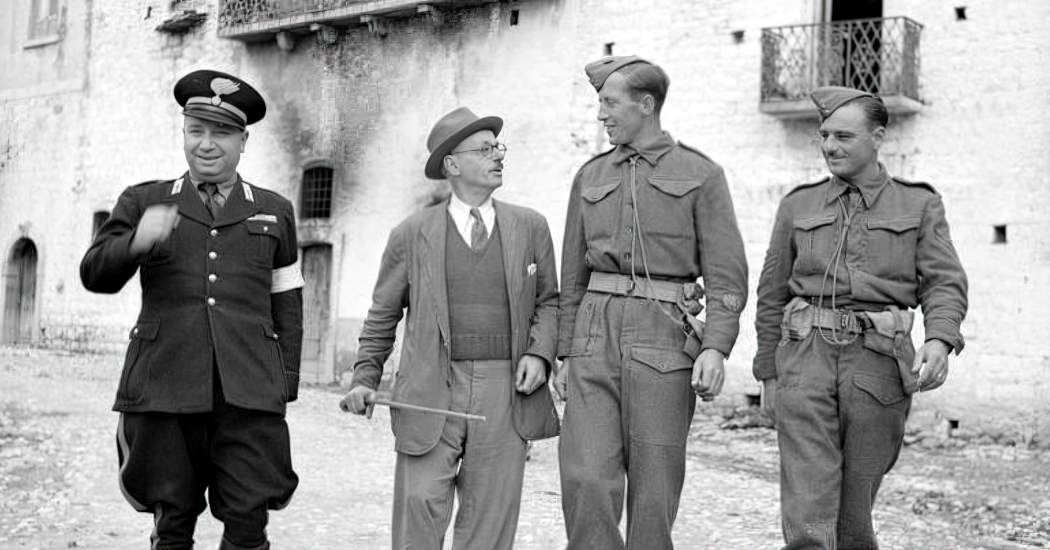
William Henry 'Enrico' Hunston showing British troops around the Italian village of Savignano di Puglia. Copyright Imperial War Museum © IWM NA 8259.
William Henry ‘Enrico’ Hunston
My great grandmother’s first cousin William Henry Hunston was born in January 1878 in Ecclesall-Bierlow, Yorkshire, to parents Robert and Martha Ann (neé Houlter). He was baptised 30 January at St Silas, Broomhall St, Sheffield.
William grew up in Yorkshire, living in Ecclesall-Bierlow at the age of three with his parents, younger brother John, and Martha’s mother, Mary Houlter, who had previously been a nurse. At the age of 13 he was a cutler’s apprentice, living at Nether Hallam, Ecclesall-Bierlow, with his parents, two brothers, and two sisters, and Mary (now head of the household). Around this time, the now famous cutlery-making industry in Sheffield was just becoming established.
By 1901, aged 23, William had moved out of the family home and was a house porter at Sheffield Royal Infirmary (we think, from census records). His parents, three brothers, and a sister still lived in Nether-Hallam. In 1911, his two brothers, a sister, and a boarder - but not his parents - lived at the same address. But at this time, William, aged 33, was likely living in Milan, Italy.
New York, New York, New York
In 1913, at the age of 35, William set sail to New York. He arrived in February at Malone on SS Mendoza from Genoa, Italy. Documents show his address as 9 Via Vittoria Colonna, Milan, Italy, and his wife as Edmea Hunston. He was visiting New York as a commercial traveller. The ship’s manifest shows he was travelling in good company and lists: C H Dudley Ward, listed as an author and who wrote a history of the Welsh Regiment; also Clement Malone, a student, who went on to become the Chief Justice of the Leeward Islands, 1943-50, as Sir Clement Malone.
SS Mendoza was an ocean liner that sailed to New York regularly, from 1909 to 1916. In 1918, the US chartered it for WWI troop transport. It resumed regular services to New York from 1919 until 1921, later running services between Italy and South America, before the liner was scrapped in 1928.
William also visited Canada during his first five-month trip to North America, using the Vermont, St Albans Canadian border crossing from Canada to USA in June, and returning home to Milan in July 1913.
The following postcard is from about 1913 as the address on the back is the one William gave on arriving in New York in that year. It could be a photo of him and his new wife to send home to family in England, possibly taken on their wedding day as they are both dressed up and he may have a carnation tucked between his tie and waistcoat.
Edmea seems to be a woman’s name popular in northern Italy at that time and is probably Italian in that she lives in Milan when her husband is away for long periods of time. The name could be Signora Edmea or Signore Enrico.
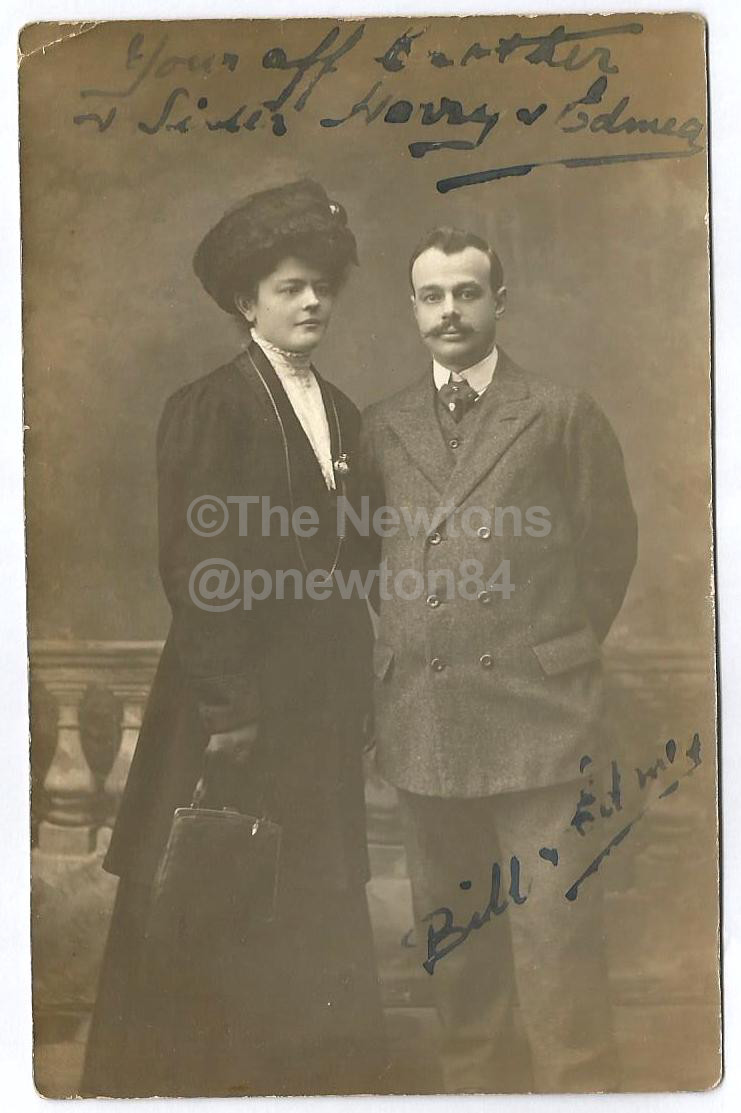
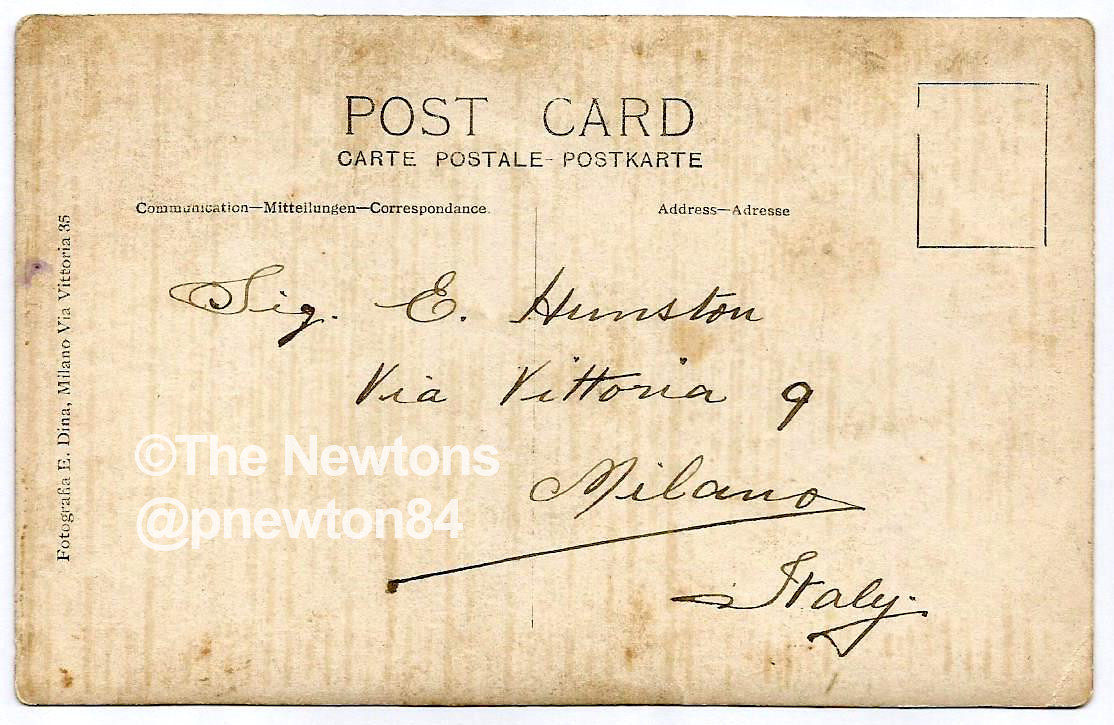
The next photo is probably from around the same time, but could be for identity purposes when travelling (e.g. from an early form of passport) or business purposes as a commercial traveller.
It’s possible he was a salesman of fancy ribbons, for which Milan was famous then, and our family still have a couple of samples of them. Note the lucky horseshoe on his tie, worn in the Italian style, upside down.
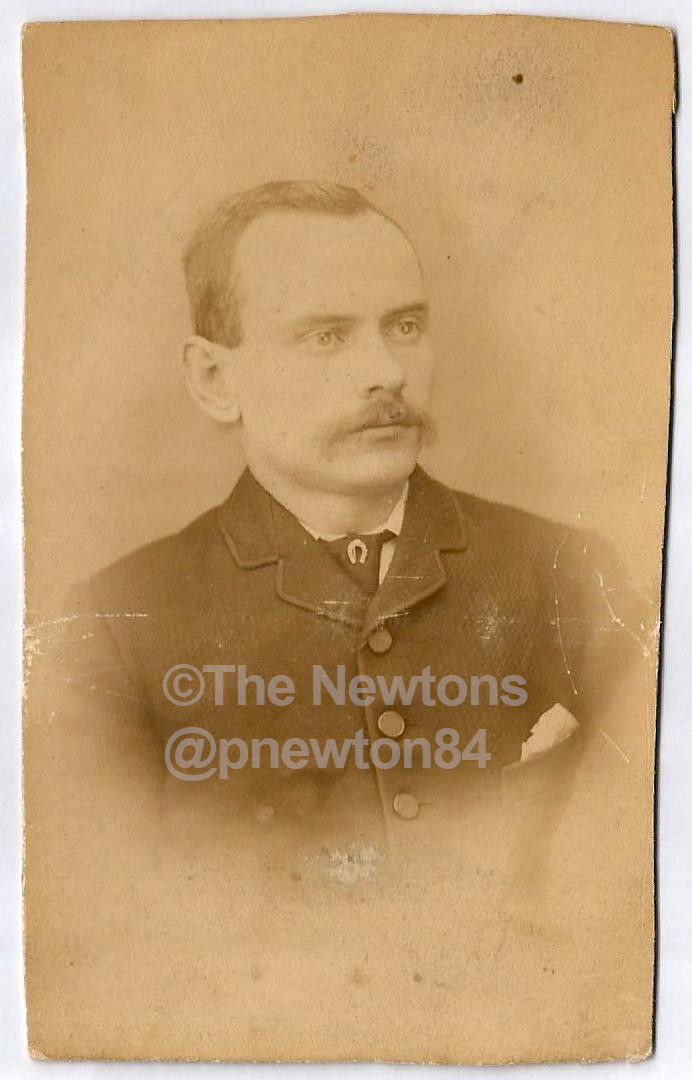
On 29 December 1913, just five months after returning home to Italy, William departed Genoa, Italy on SS Verona, which called at Naples and continued to New York, landing at Ellis Island 16 January 1914. Documents list him as Henry Hunston, age 36, born Sheffield, living in Milan.
SS Verona was an Italian passenger steamer, built in 1908 by Workman, Clark and Company in Belfast, and operated by the Navigazione Generale Italiana, of Genoa. Four years after William’s trip, on 11 May 1918, the ship left Messina for Tripoli with some 3,000 soldiers on board, most of them deserters who were being sent to a detention camp in the Italian colony of Libya. She was torpedoed by a German submarine off Cape Peloro, Messina, Sicily. The ship sank within 25 minutes, but many soldiers were saved because land was relatively close, and several ships came to their rescue. Still, around 880 lives were lost.
Based on immigration records, on this trip we know he stayed at Cadillac Hotel in Times Square.
On this visit to the United States, William stayed for a year, until 1915, before travelling back to Italy.
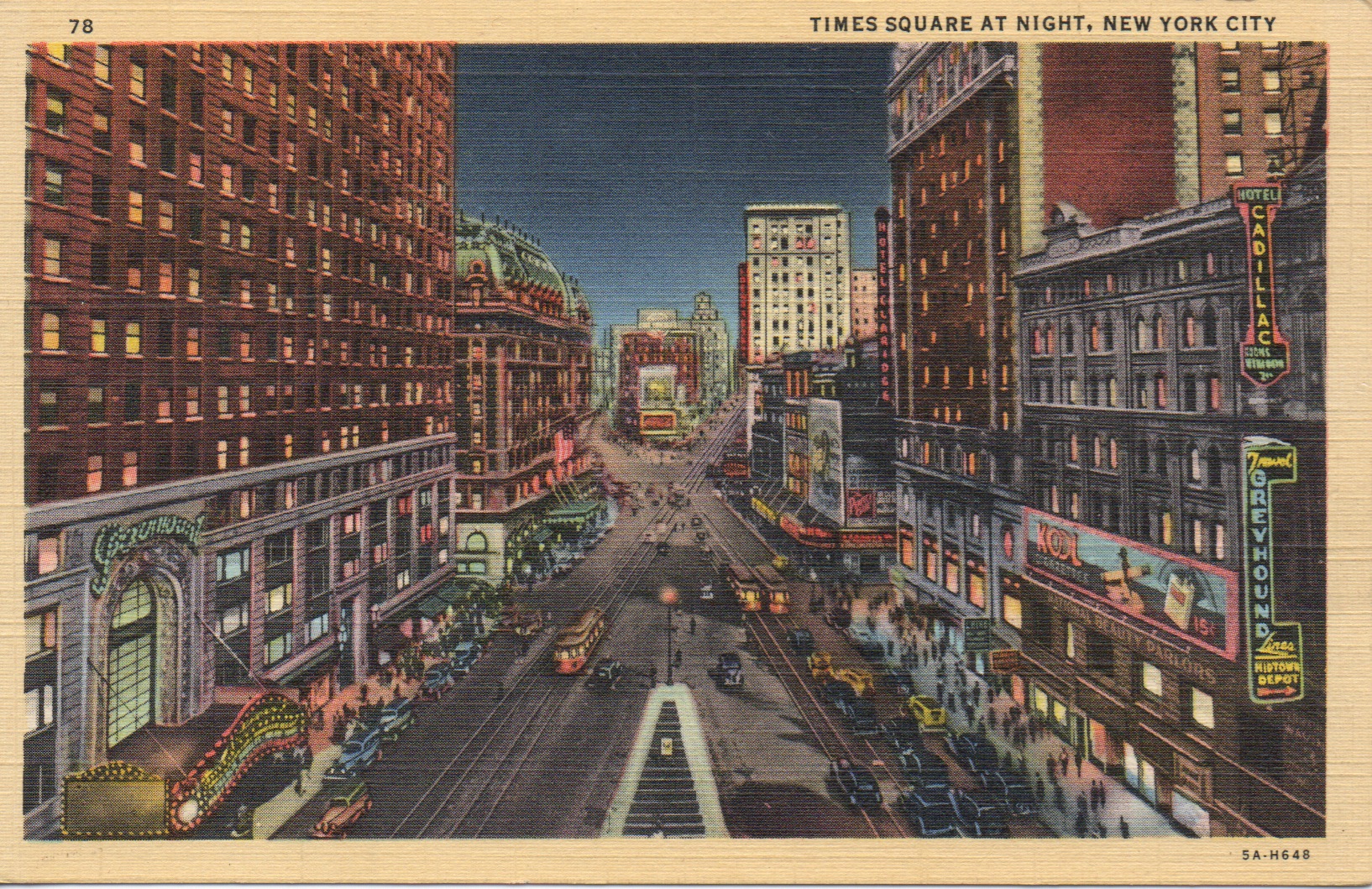
On 7 March 1916, William once again left Genoa, Italy on SS Stampalia, called at Naples, and landed at Ellis Island, New York 24 March. Documents list him as Enrico Hunston, a trader, age 38, born Sheffield, living at Via de Amicis, 9 Milan, with his wife S (Signora) Hunston. The form states he is going to stay at the Wallick Hotel, Broadway/43rd St. He gives his last permanent address as New York, possibly from his 1914/15 visit. We do not know when William returns to Italy.
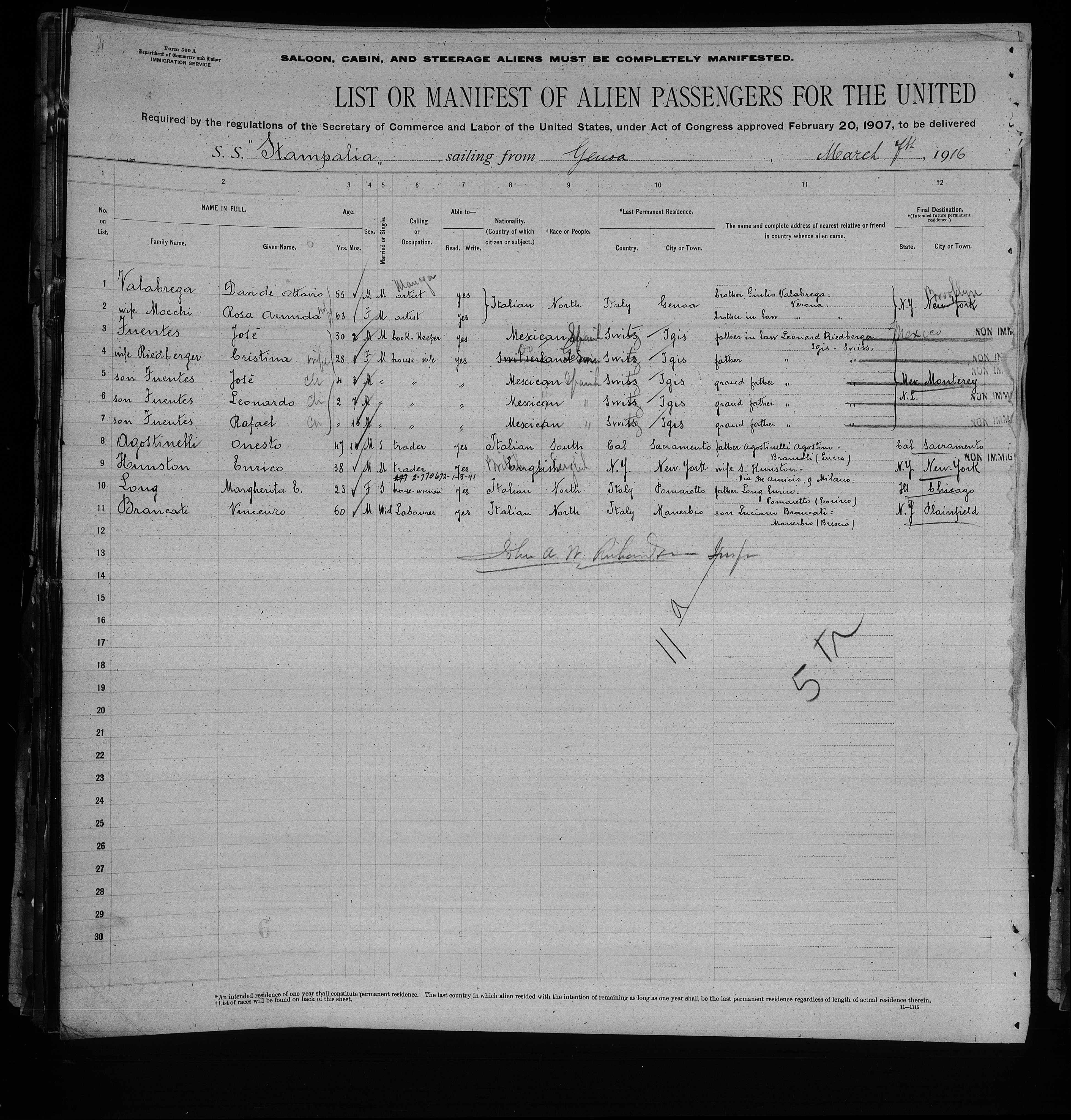
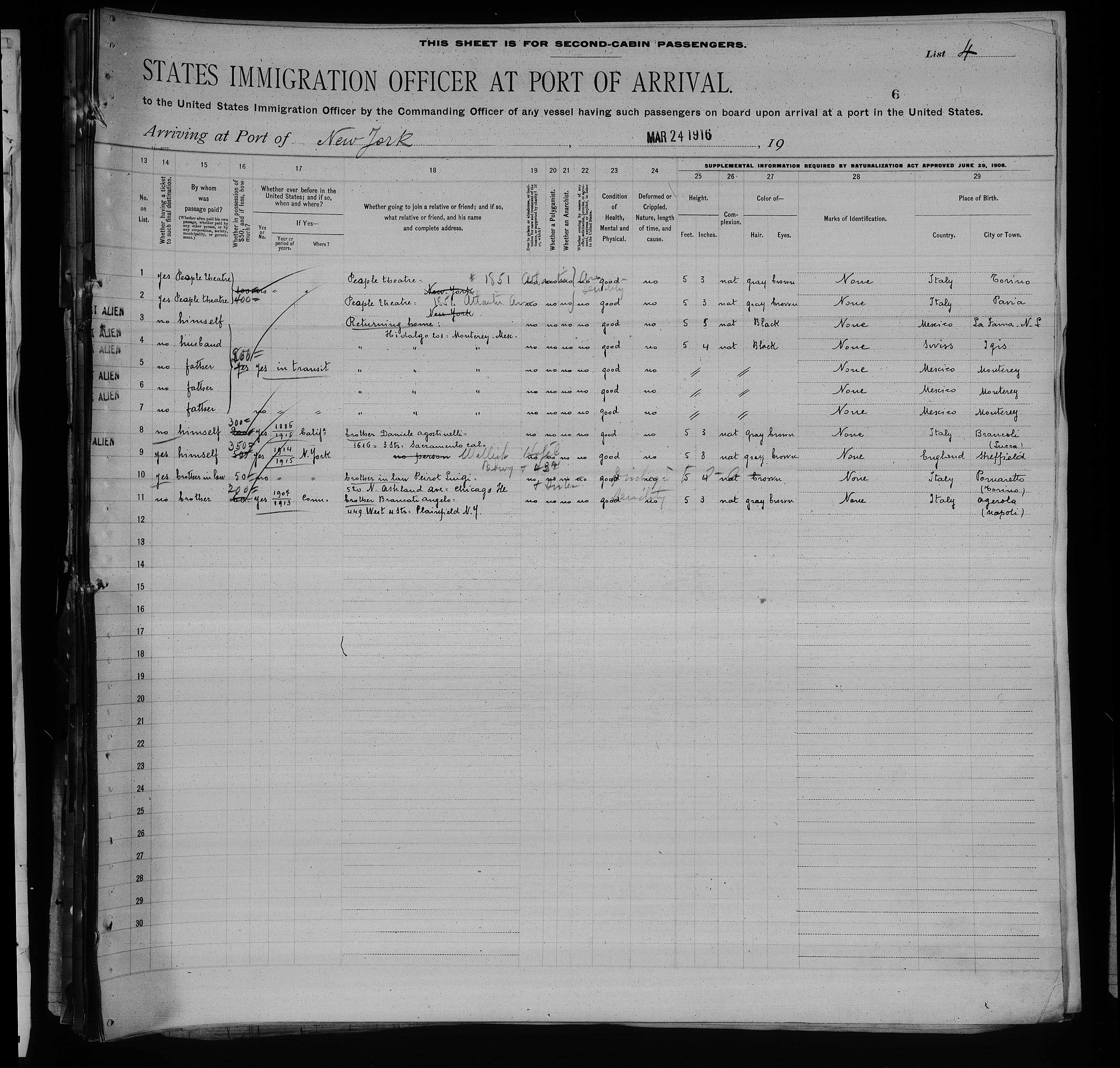
SS Stampalia was an Italian passenger ship which was sunk in the Mediterranean Sea 30 nautical miles (56 km) south of Cape Matapan, Greece, by SM UB-47 (Imperial German Navy) on 17 August 1916.
Wallick Hotel where William, now known as Enrico, stayed in 1916. Source: dlc.library.columbia.edu
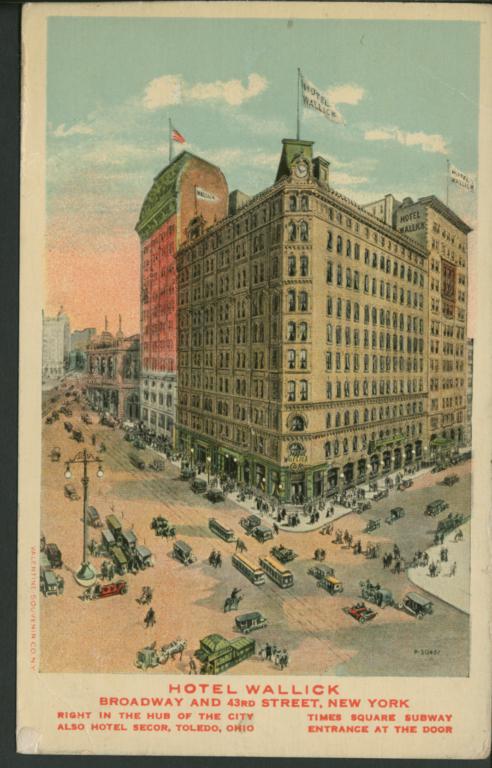
Italy and WWII
Italy joined the Second World War as one of the Axis Powers in 1940, with a plan to concentrate Italian forces on a major offensive against the British Empire in Africa and the Middle East, known as the “parallel war”, while expecting the collapse of British forces in the European theatre.
The Allied invasion of Sicily in July 1943 led to the collapse of the Fascist Italian regime and the fall of Mussolini, who was deposed and arrested by order of King Victor Emmanuel III on 25 July. The new government signed an armistice with the Allies on 8 September 1943.
However, the Germans fought on, deploying 16 new divisions on the Italian mainland in August 1943, who would continue to fight until 2 May 1945, two days after the collapse of Berlin.
Further Allied amphibious landing on mainland Italy that took place from 3 September 1943, during the Italian campaign of World War II. The main invasion force landed around Salerno on 9 September on the western coast in Operation Avalanche, while two supporting operations took place in Calabria (Operation Baytown) and Taranto (Operation Slapstick).
The Allies then pushed north, although progress was slow as demolished bridges, roadblocks, and mines delayed the Eighth Army. The nature of the countryside made it impossible to by-pass obstacles and so the Allies' speed of advance was entirely dependent on the rate at which their engineers could clear obstructions.
By 1944, the ‘Gustav Line’ marked the frontline between the Allied forces and the Germans.
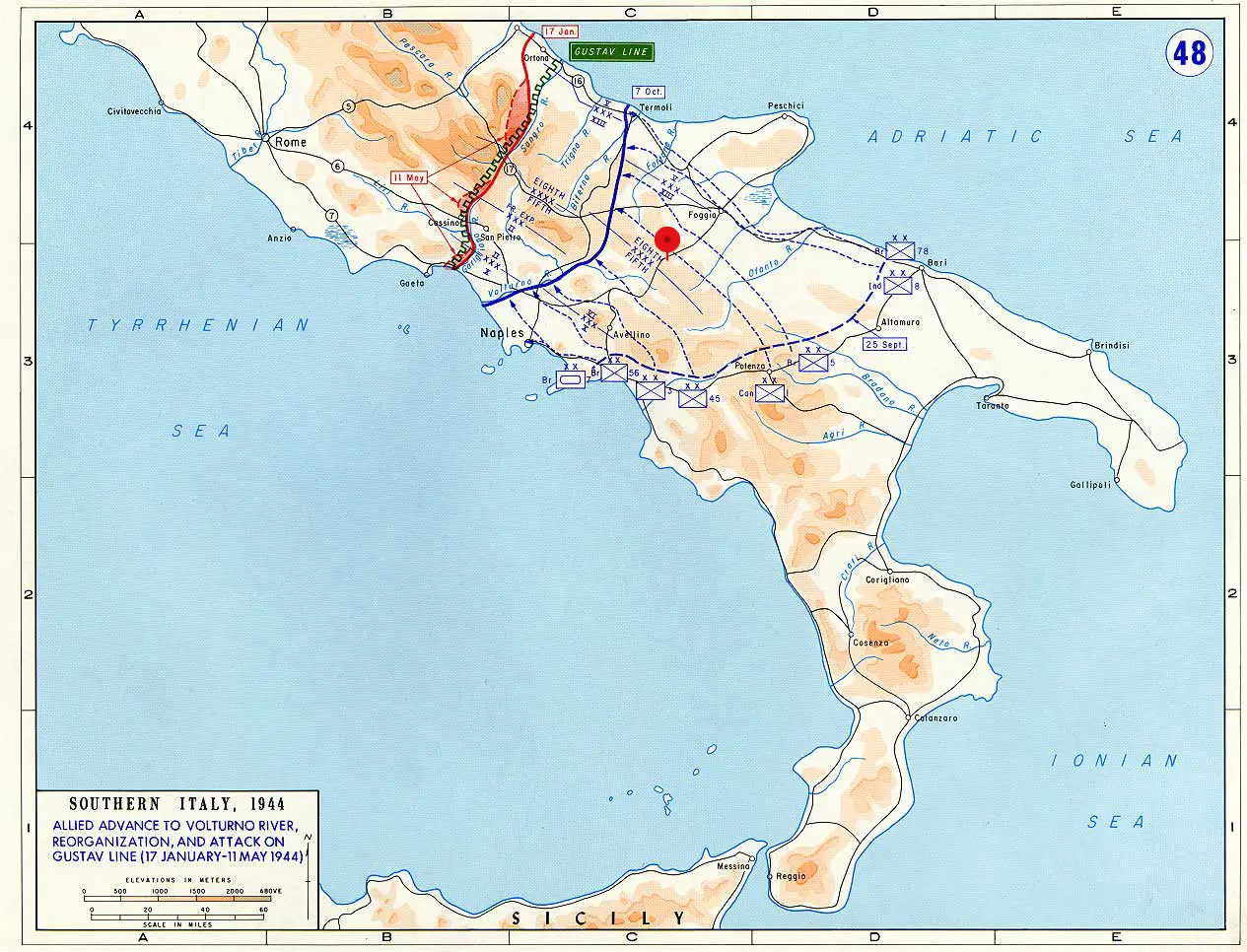
William runs a ‘One Man Amgot’
The next we hear from William Henry ‘Enrico’ Hunston is during the Second World War. As an alien, he would have been placed in internment, and released at the fall of Mussolini. His fluency in Italian would have made him a valuable asset to the Allies, and he is recorded as running a ‘One Man Amgot’ in the Italian village of Savignano di Puglia, in the province of Avellino, the Campania region of southern Italy – situated halfway between Naples and Foggia, around 60 miles from the Gustav Line (see the red dot on above map).
An Allied Military Government of Occupied Territories (abbreviated to AMGOT) was the form of military rule administered by Allied forces during and after World War II within European territories they occupied.
A front-page article in The Sunday Post, dated 14 November 1943, states:
“British troops entering the Italian village of Savigano de Puglia found the chief administrator to be a Sheffield man, William Henry Hunston. He was an English teacher who was released from internment [confined as a prisoner, especially for political or military reasons] when Italy capitulated [surrendered]. He was then placed in control—the Lord Poo-Bah of the village.” (Source: britishnewspaperarchive.co.uk)
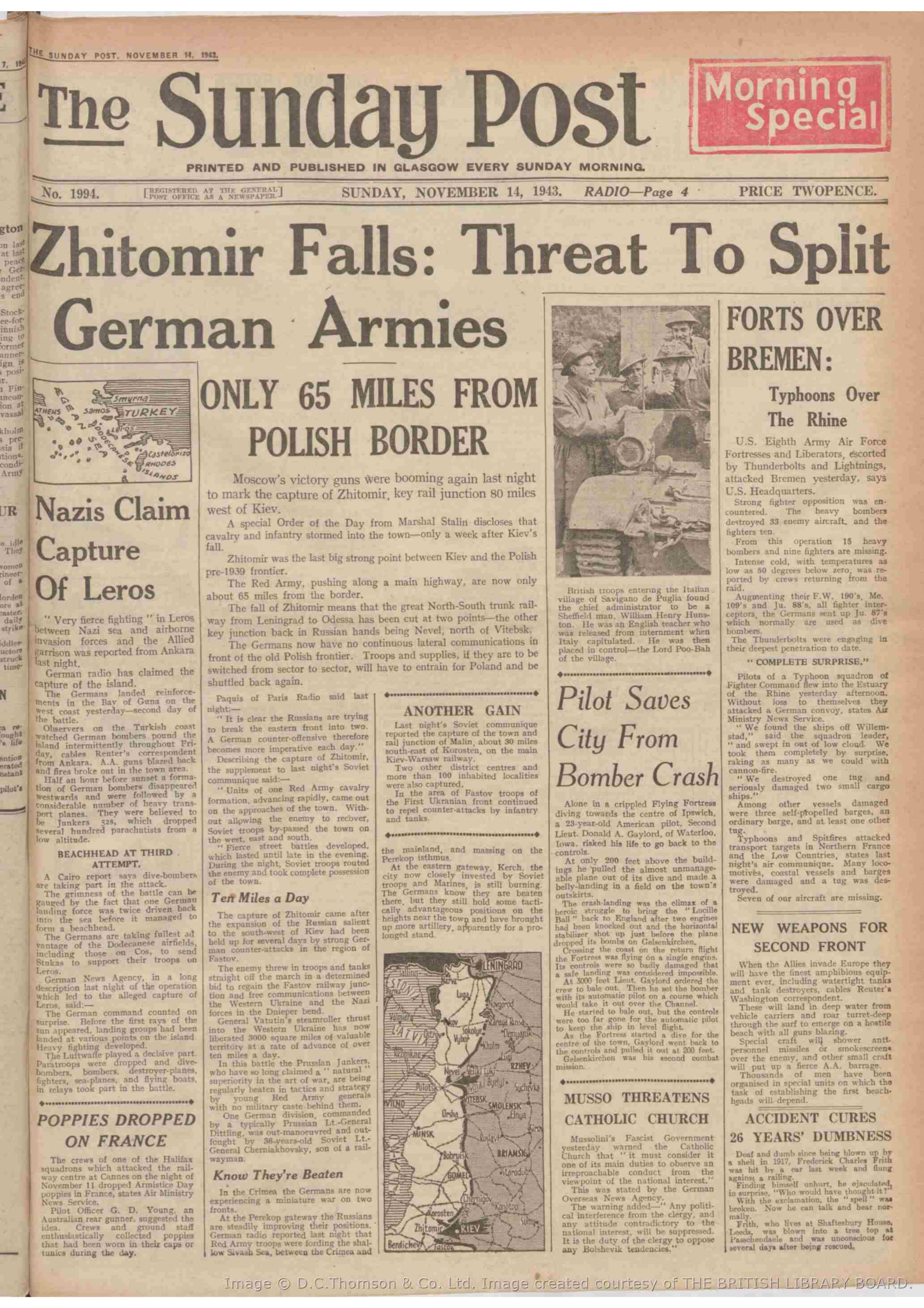
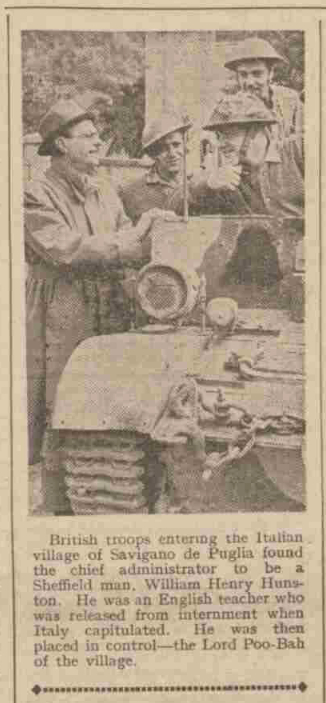
In the thesis ‘Occupying Puglia’ by Amy Louise Outterside (Newcastle University, 2015), it tells us:
The Allied Control Commission did take reconstruction seriously and this is evident in their need to document the situation both prior and after occupation. In November 1943, the British Army Film Unit was instructed to ‘make a film of the military administration in Italy, incorporating reconstruction of some towns after heavy bombing’, with filming to commence at Reggio Calabria on 9 December 1943 and then to continue on the Italian mainland. The film was a joint Anglo-American venture, which would be used by PWB (Psychological Warfare Board)… The film demonstrates that the various sections of the ACC had to prove what work had been undertaken.
The following photos were taken by Sgt. Drennan of Glasgow, part of Unit Number 2 of the Army Film and Photographic Unit (a subdivision of the British armed forces) in October 1943. Sgt. Drennan had been covering the Eighth Army’s push north.
The first photo of William shows him talking to the local chief of the Carabinieri (the national gendarmerie of Italy who primarily carry out domestic and foreign policing duties) about the welfare of the local Italian people. Due to the role the Carabinieri had played in the downfall of Mussolini, the Germans did not view the Carabinieri as loyal to the fascist cause. They disarmed the force and began the deportation of 8,000 officers to Germany for forced labour on 6 October 1943. Subsequently, large numbers of Carabinieri joined the Italian resistance movement to fight German and Italian fascists. Source: Imperial War Museum © IWM NA 8258
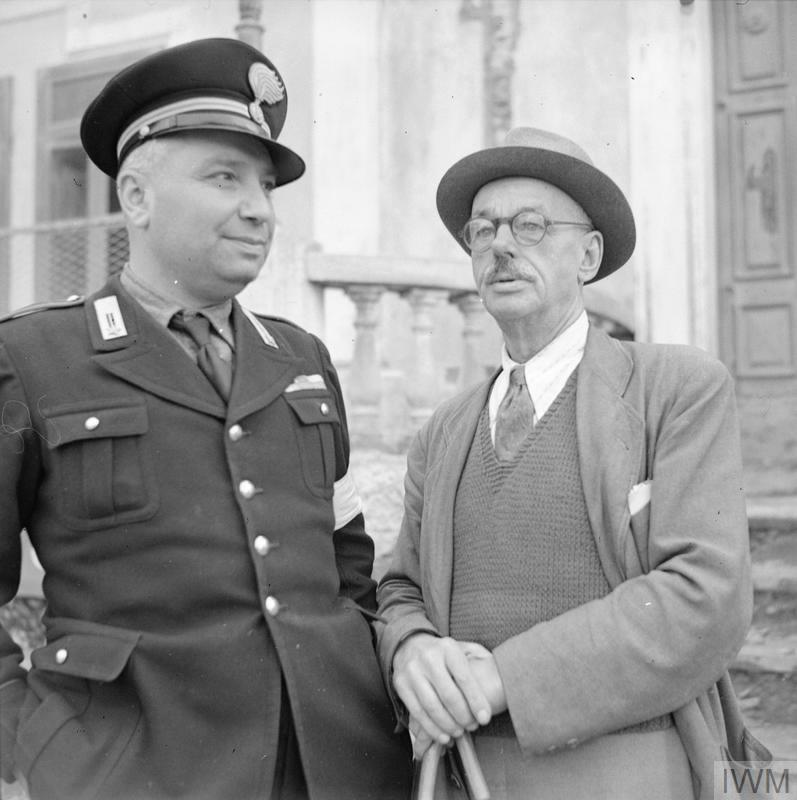
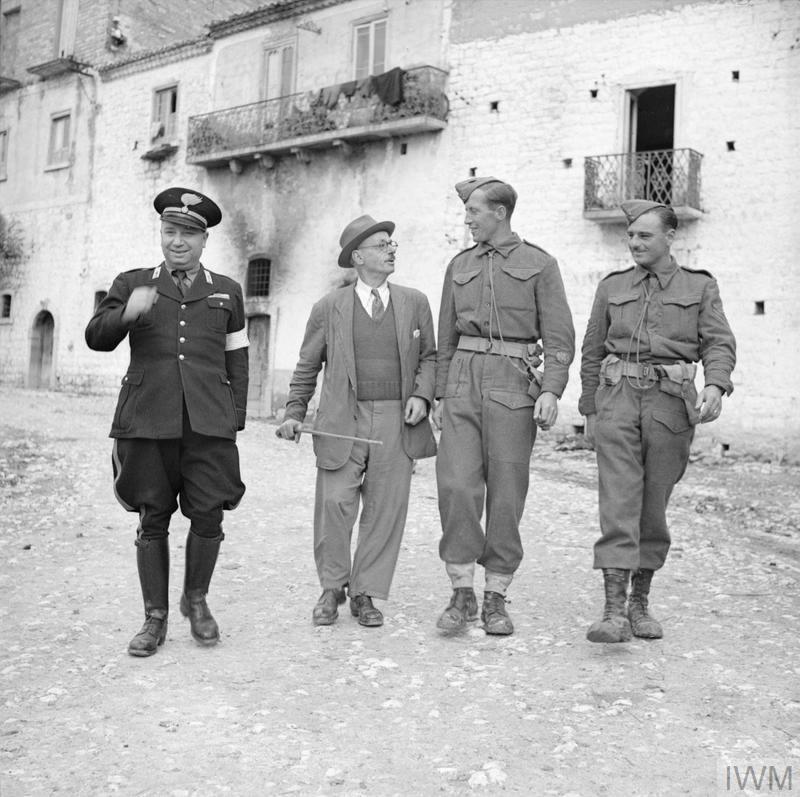
William went on to show the newly arrived British troops around the village, helping them to set up billets. Source: Imperial War Museum © IWM NA 8259
William is also seen outside the village flour mill with a crowd of villagers. The photo caption says that “due to his personal efforts, the mill is again working on an improvised petrol engine, the original being destroyed by the enemy”. Source: Imperial War Museum © IWM NA 8260
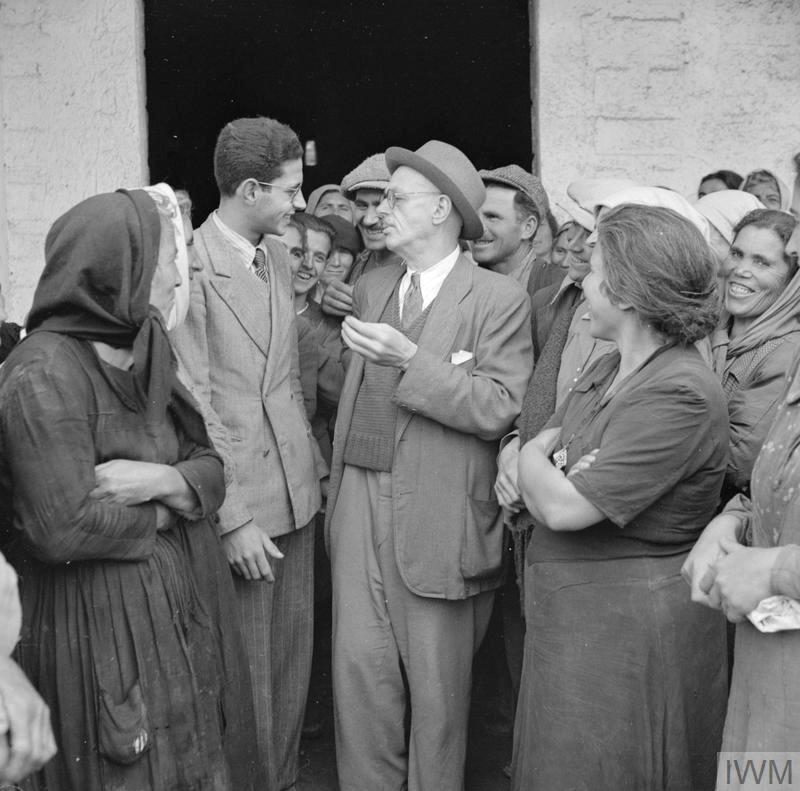
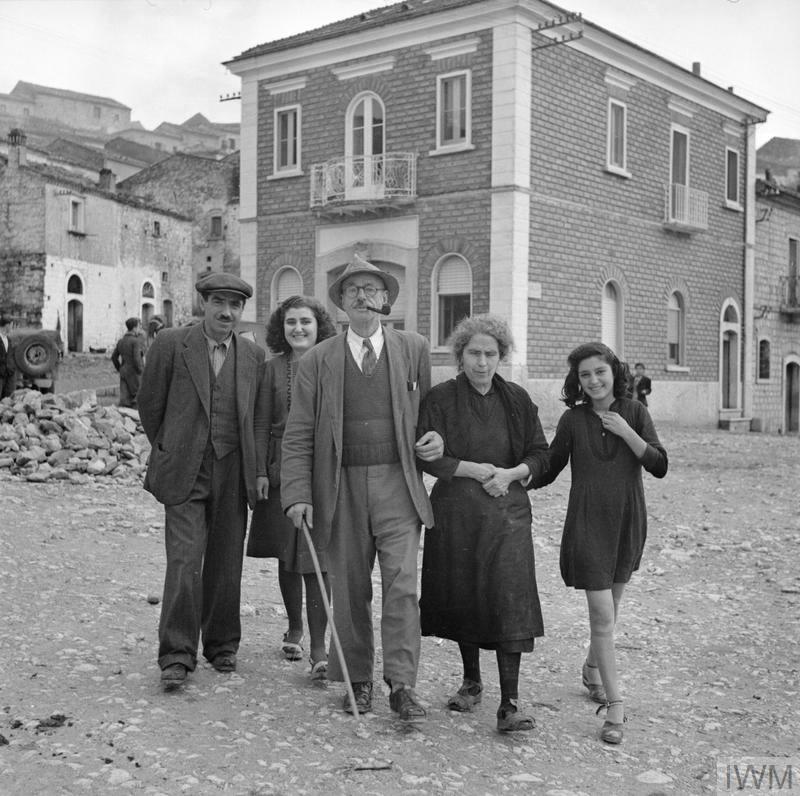
In this photo, William is walking through the village with the locals. Source: Imperial War Museum © IWM NA 8267
The building in the background of this photo is still there today in Savignano Irpino, on Via America (America Street). At the time, the building was used as a hotel:
William was also photographed at the Municipal building with the village Mayor, the Town Clerk, and the Food Control Officer. Source: Imperial War Museum © IWM NA 8261
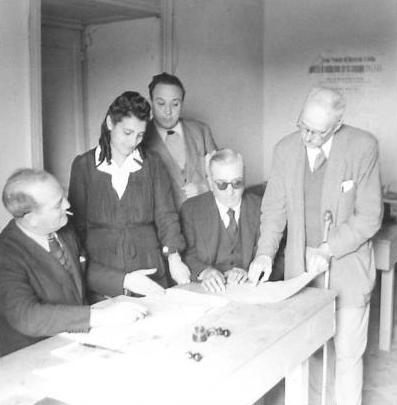
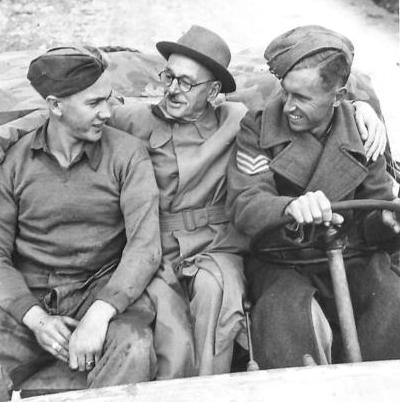
William also met another Sheffield man from the British Army, Driver J. Brown of the Royal Engineers, from Darnal, Sheffield. They are here photographed setting off to a neighbouring village to recruit stonemasons to help construct a nearby bridge, blown up by the retreating enemy. Source: Imperial War Museum © IWM NA 8263
William was also photographed visiting the site of the temporary bridge, and oversaw the construction of a new structure. He was responsible for arranging the hiring of 27 stonemasons. Source: Imperial War Museum © IWM NA 8264
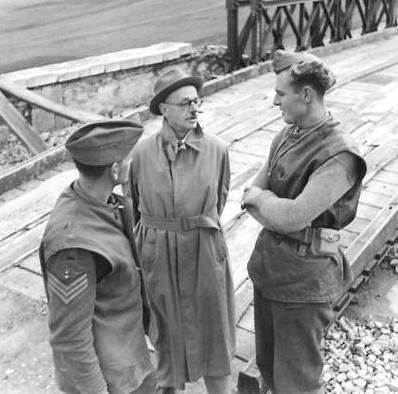
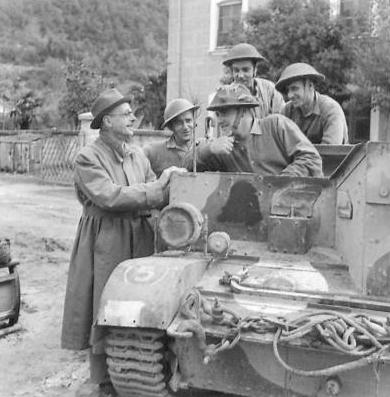
In this photo, William is again seen chatting to the British forces as they passed through the village. He must have been a useful person for both the British and local Italians. Source: Imperial War Museum © IWM NA 8265
The final photo taken by Sgt. Drennan on the 31 October 1943 was a portrait of William. Source: Imperial War Museum © IWM NA 8266
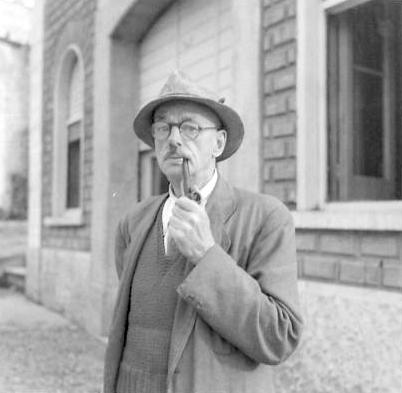
Unfortunately, though he and my great grandmother, who was William's cousin, appear to have been friends, and we know he gave the family some gifts, we don’t know what happened to him after the war, or much about his private life – whether he had children, or when and where he and his wife died.
More about Savignano di Puglia, Italy: https://tony1430.tribalpages.com